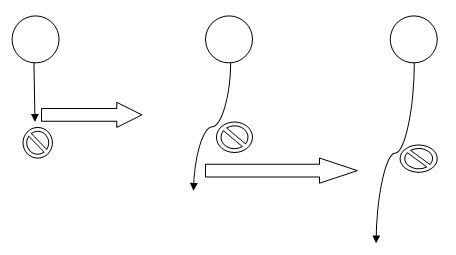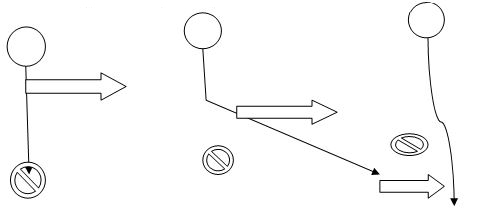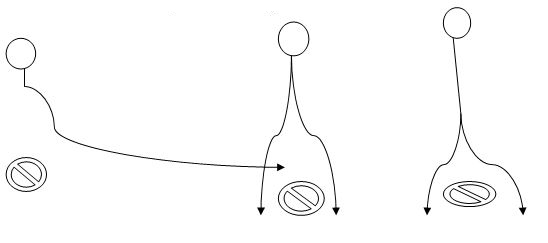- Rugby Toolbox
- Resources & Education
- Learn more
- Articles
- Snook on Coaching
- Passing & Catching
- Ruck & Run Drill
- Playing Philosophy – Ruck & Run Coaching Components
- Playing Philosophy – Spread the Forwards
- Playing Philosophy – A forward behind the ruck
- Playing Philosophy – Ruck & Run
- Playing Philosophy – An idea!
- The Breakdown
- Building Positivity [3]
- Building Positivity [2]
- Building Positivity
- Fitness and Game Related Activities
- Getting the Head Working
- Missiles are Dangerous
- Use of Video
- Winger Attacking Outside First-Five
- Player Profiling
- Selection
- Fitness Away from the Team Session
- Playing Philosophy (Pre season Prep)
- Coaching the Coaches
- The Rugby Coordinator and Pre-Season Preparation
- Why Not Use Tap Penalties More Often?
- Why Kick the Ball Down the Middle of the Field?
- Defending the 5 Metre Lineout Drive
- Scoring from the 5 Metre Lineout
- What are the Kicking Team Aiming to Achieve from Halfway Restart
- Should We Practice Scoring Tries?
- Team Culture
- Looking After Your Players
- Coach Survival Tips
- Under 11/13 – Backline Defence
- Under 11/13 – Ruck Defence
- Under 11/13 – Back Attack
- Under 13 – The Counter Attack
- Under 11/13 – The Maul
- Under 11/13 – Lineouts
- Under 11/13 – Decision Making
- Under 11/13 – Support Play
- Under 11/13 – Dive Pass and More
- Under 11/13 – Drop & Grubber Kick /Highball Catch
- Under 11/13 – Front on Tackling
- Under 11/13 – Contact – Getting Up – The Ruck
- Under 11/13 – The Coaching Session
- Under 8/10 – Using Space
- Under 8/10 – Kicking
- Under 8/10 – Contact and Picking Up the Ball
- U8/U10 Draw & Pass and Sidestep
- Under 8/10 – The Tackle
- Under 8/10 – The Coaching Session
- Under 7 – Test Your Coaching – Support Play
- Tap Pass and Swerve U7
- Ball Familiarisation; Passing & Receiving
- Activities for the Non-Contact Tackle
- Under 7 – The Coaching Session
- Coaching Teenagers – After the Ruck
- Coaching Teenagers – The Practice Session
- Coaching Teenagers – Best Practice
- Coaching Kids – Best Practice
- Plays from a Tap Penalty
- Running Plays from a 5 Man Lineout
- Driving Plays from a 5 Man Lineout
- Strike Plays at the End of the Lineout
- Back Strike Plays at the Lineout
- Wide Strike at the Scrum (2)
- Wide Strike at the Scrum
- Midfield Attack at the Scrum
- No 8 Plays at the Scrum (2)
- No 8 Plays at the Scrum
- The Cut Out Pass
- Skills to Penetrate (2)
- Skills to Penetrate
- Movements to Penetrate
- Patterns to Penetrate
- Contact and Continuity
- Keeping the Ball Alive Out Wide
- Pre Season Support Activities
- Checklist
- Understanding the game
- The Playing Philosophy
- The Lineout
- Overview
- Team Profile
- Start Now!
- Backrow
- Nine and Ten
- Rugby-related Fitness Activities
- The Psychological Edge
- Open Field Play
- Key Performance Indicators
- Improving Team Performance
- Backline Attack Concepts
- Tactics at Phase Play
- Playing Philosophy
- The ‘Stop Focus’
- Kick Attack
- Clearing the 22
- Wide Attack at Phase
- Player Focus
- Scrum Preparation
- Lineout Preparation
- Back Attack Preparation
- Sevens Preparation
- Sevens Kick Offs
- Sevens Scrum and Lineout
- Sevens Attack Patterns
- Sevens Defence
- 7's Selection and Game Planning
- Coaching and Leadership
- How the Game Evolves
- Changing Within the Game
- Learning from the Television.
- Using Tap Penalties Wisely
- Defence Drills
- Defence Drills for Tight Five
- Team Defence and TUB’ing
- Establishing Patterns from the Ruck
- Structured Phase Play
- Structuring Phase Play on the Run
- Coaching Roles
- Structuring a Close in Tackling/Defensive Session
- Coaching in Threes
- Attacking Back Play
- Kick Off Chase
- Wrap Around Back Plays
- Lineout Plans
- Looking and Learning
- Motivating Your Players
- Scrum Attack
- Refocusing the Team
- Monitoring the Progress
- Learning the Game
- Playing to the Laws
- Small is OK
- Decisions After the Tackle
- Improving Your Coaching
- Food for Thought
- More Food for Thought
- Passing & Catching
- How Ireland Nearly Beat the All Blacks
- The Progressive Coach
- Try Something New
- Encouraging Excitement
- The Mental Approach
- Where to Start
- Being the Best You Can Be
- Off the Ball Decisions
- Lineouts Difficult to Master
- Decisions on the Run
- Rucking and Rolling
- A Successful Approach
- Gaining Clarity
- Manipulation vs Physicality
- Beating the Drift
- To Ruck or Not to Ruck
- Stopping the Lineout Drive
- Fine Tuning the Planning
- It's a Running Game
- RugbySmart 2015
- Using the Shoulders
- Loosehead Prop / Tighthead Prop
- Position Specific – Hooker
- Position Specific – Lock
- Position Specific – Blindside Flanker
- Position Specific – Openside Flanker
- Position Specific – No 8
- Position Specific – Halfback
- Position Specific – First Five Eighth
- Position Specific – Second Five Eighth
- Position Specific – Centre Three-quarter
- Position Specific – Wing
- Position Specific – Fullback
Passing & Catching

With pre-season soon upon us in the Southern Hemisphere, now is the time to ram home the basics of passing and catching so that there only needs to be minimal reinforcement during the season.
By reinforcing the following techniques and introducing increasingly difficult drills as you progress much can be accomplished.
Techniques
Spiral Pass
- Hands on side of the ball
- Keep the elbows slightly bent and arms close to the body
- Swing the arms close to and immediately across the body and let the levers do the work.
- Rotate the body by turning the head, shoulders and hips. Keep the bottom half square on.
- The hand behind the ball provides the power, direction and control
- This hand must stay in contact with the ball along the line of the pass.
- Point narrow end of the ball at the target
- Follow through with the fingers pointing to the target.
- Use the wrists to help with propulsion.
- Distribute leg weight naturally. Isolate the upper and lower body when running.
- Pass to the space at chin height so the receiver has his head forward and hands, fingers and eyes up.
- Quick ball (one action pass)
- Take it as early as possible. Reach out further with your arms
- (Try) near leg forward
- Ball can be received at a lower height
- Pull it across the body
- Deliver it off the same leg in the same stride
- The hands have released the ball by the mid line of the body.
- Take at least one step forward before supporting.
- Throwaway pass (to drifting receiver)
- Aim the ball at the outside shoulder past the receiver
- Throw it further in front flatter and harder than normal.
Introductory Drills
Introduce these techniques using line passing:
Standing still
Jogging forward.
Moving quicker
Getting wider and wider
Running faster and faster.
Introducing defenders (run attack with one less defender / vary where the space is)
Drills to improve Footwork
These drills will help isolate the upper and lower body and prepare the player for passing even if he does not feel in balance.
Tyres: set these out so that the player has to run through them and catch and pass at the same time.
Ladders: a similar activity. You could have ladders side by side so that two players are passing and catching. Make them go faster and faster.
Short hurdles: the same principals apply. You could use cones instead of hurdles.
One footed: get the players to hop and pass and see how they go.
These ideas are a bit of fun, make the player concentrate, and will improve the overall pass under pressure.
Movement before the Pass
Players need to learn and practice that only occasionally do they catch and pass whilst running straight and they need to understand that they can make movements both with the ball and without the ball that will create a threat in the opposition defensive line.
It is important as the next progression in the drills that players have the opportunity to practice this. By running a series of simple patterns the players will gain an understanding of what is required to achieve ‘being a threat’.
3 v 3 is a good beginning. (Could start with cones instead of defenders)
a) Pattern 1 – Running at an inside shoulder
Ball carrier runs directly at defender to square him up.
First receiver runs straight at his man and just before receiving the pass he steps and accelerates on to the inside shoulder of the defender.
Second receiver does the same. (The third defender might need to stay deeper)
The first receiver should then wrap the second receiver and the initial ball carrier should get deep on the inside pocket with one of these players scoring the try 10 metres away to complete the pattern.
Players should step over their outside foot with a hip rotation and accelerate in to the space.
b) Pattern 2 – Running at the next defender.
The ball carrier commits the first defender by running at his inside shoulder. He gives the ball earlyish to the first receiver so that he can hold his defender with a straight run before swerving and accelerating towards the third defenders inside shoulder. He should try and look in the eyes of the third defender to calculate what he is doing – he might come in which will require an early pass or he might stay back and turn if necessary which will require an acceleration into the gap and a pass to the bursting second receiver coming at pace on to the ball. This might be after he is tackled. The three players should complete the try as in pattern 1.

c) Pattern 3 – Ball carrier on a lateral run.
The ball carrier receives with his shoulders square as per normal but after a couple of steps begins a lateral run targeting the second defenders outside shoulder. The first and second receivers need to know what their defender is going to do before they make up their minds on whether they hit a ball on the inside shoulder or they hit a ball on the outside shoulder of the defender. The ball carrier might dummy the first receiver and give it to the second receiver. The drill should be completed with a try.

The ball carrier has 4 passing options or might even keep running after the ‘dummy’.
** There is much more that can be done but this will be a good starting point.
Good luck.